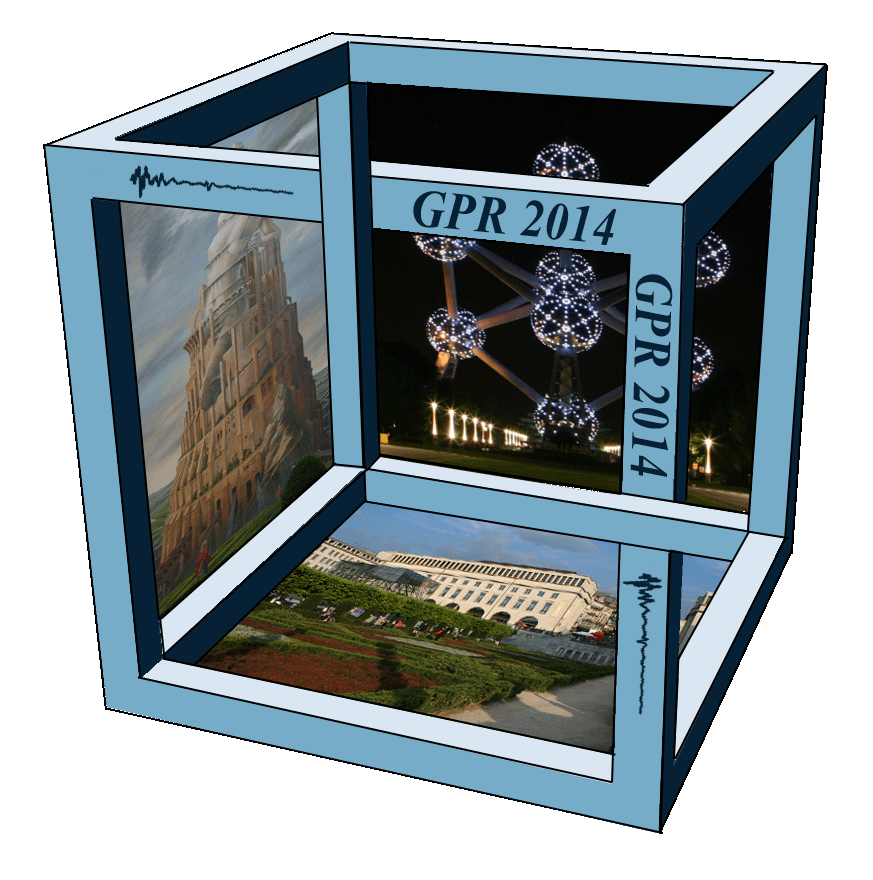|
Scientific Review Panel
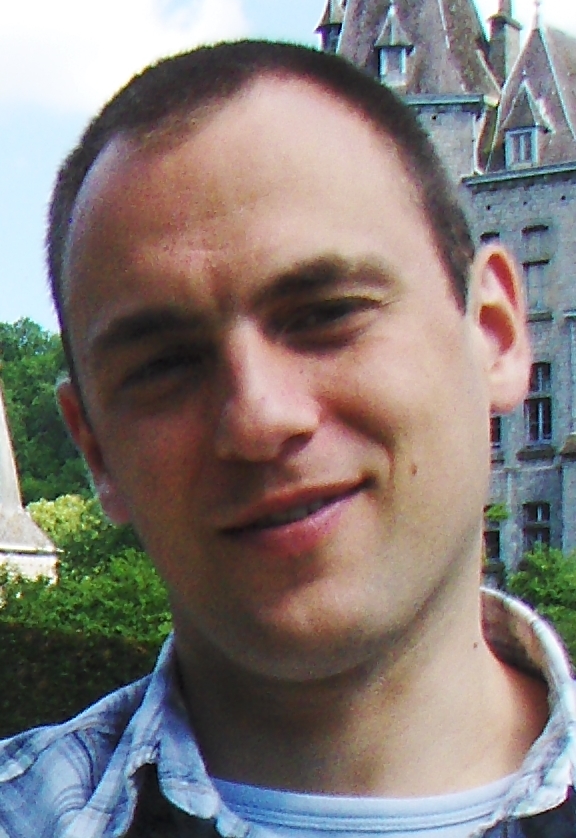 | Frédéric André
received the M.Sc. and Ph.D.degrees in agricultural and environmental
engineering from the Université catholique de Louvain (UCL),
Louvain-La-Neuve, Belgium, in 1999 and 2007, respectively. He was with
the Forschungszentrum Jülich, Jülich, Germany, as a Post-doctoral
Scientist, from 2008 to 2011. Since 2011, he has been a FNRS Researcher
at UCL. His current research interests include forest sciences and
ground-penetrating radar and electromagnetic induction data processing
for digital soil mapping. Dr. André is co-organizing the 15th
International Conference on Ground Penetrating Radar (2014).
|  | Steve Arcone
obtained his undergraduate degree from Cornell, his graduate degrees
from Cornell (MEE) and Dartmouth, (PhD, 1977), and has been at the U.S.
Army Cold Regions Research and Engineering Laboratory (CRREL) for over
40 years. Steve uses field, laboratory and numerical methods to
research the scattering and dispersion of surface and subsurface radio
waves in rough terrain, the development of polar and subpolar snow,
glacial and periglacial stratigraphy, and the dielectric properties of
sediments. His field research has been mainly in Alaska,
Antarctica, and New Hampshire, and his support has been from NSF, NASA,
SERDP and the Army 6.1 program. Steve is on the adjunct faculty
at the Universities of Maine and Connecticut, collaborates with
national and international universities, sponsors students, and serves
on thesis committees.
|  | Andrea Benedetto
is associate professor of Roads, Railways and Airports at the
Department of Engineering of Roma Tre University. He is Editor in Chief
of Advances in Transportation Studies, Associate Editor of
Geoscientific Instrumentation, Methods and Data Systems and served as
Guest Editor for the Journal of Applied Geophysics and Nondestructive
Testing and Evaluation. Moreover he is member of the editorial boards
and he is referee for several other prominent international journals.
He is convener and co-convener of the Session on Civil Engineering
Applications of Ground Penetrating Radar since 2011. From 2013 he is
Editorial Coordinator of the TUD COST Action TU1208 Civil Engineering
Applications of Ground Penetrating Radar. Andrea Benedetto is author of
more than 120 papers, he played the role of Chairman and member of the
Scientific Committee at GPR international conferences and at the
international workshops on GPR.
| 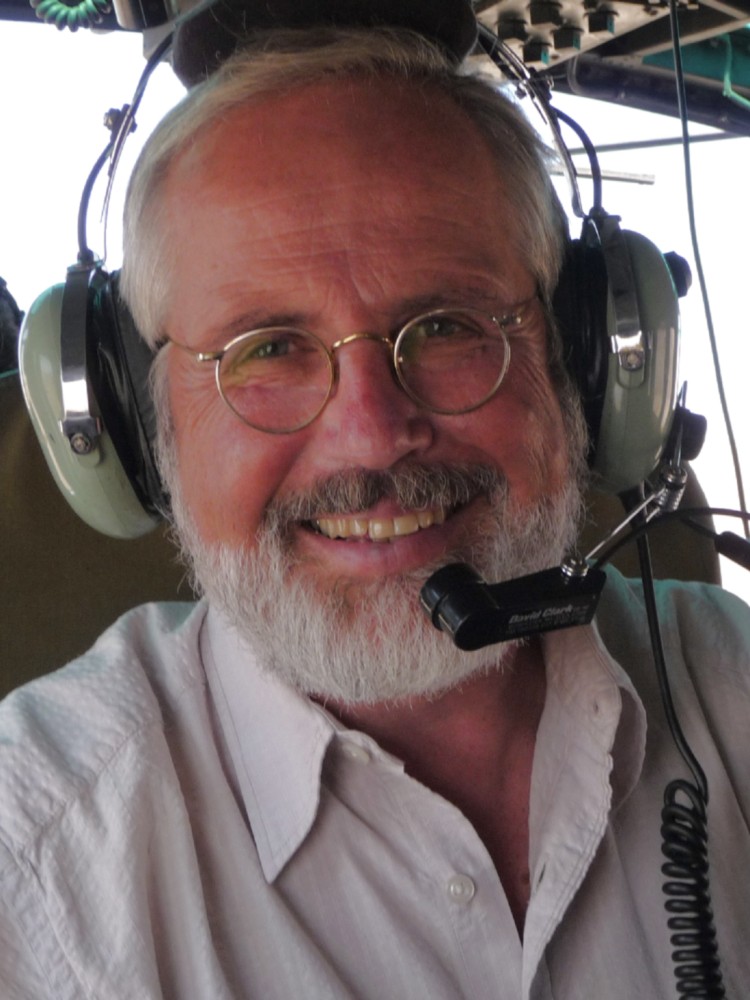 | Norbert Blindow
(Germany) received a M.S. (Diplom) degree in physics at the University
of Münster (UM) in 1977. Then he changed to the field of applied
geophysics as a researcher at UM and at the Free University of Berlin.
In 1987 he obtained a doctoral degree (Dr. rer. nat.) at UM with a
thesis on GPR measurements of ice shelves and temperate glaciers. He
has developed and applied novel geophysical methods and instruments for
the exploration of groundwater in arid regions (Eastern Sahara,
Atacama), archaeological research in the Mediterranean (Greece,
Turkey), and for the detection of ice thickness and internal structures
in glaciers and ice sheets (Alps, Andes, Antarctica, Greenland). His
latest GPR developments include an airborne system capable of sounding
deep temperate ice. Other successful applications have been related to
mining exploration in northern Chile and groundwater surveys in
northern Germany. Airborne platforms include the use of helicopters,
fixed-wing aircraft, and air ship. He received several grants from the
German Research Foundation and other institutions and has published
journal articles and book chapters on topics of near surface
geophysics, GPR, and glaciology. In the period 1987-2009 Norbert was
senior scientist and lecturer at the Institute for Geophysics,
University of Münster. In the years 2010-2013 he was senior scientist
at the GPR group of the Federal Institute for Geosciences and Natural
Resources (BGR) in Hannover, Germany. Now he has retired from BGR and
is a consultant for airborne GPR and geophysics on glaciers.
| 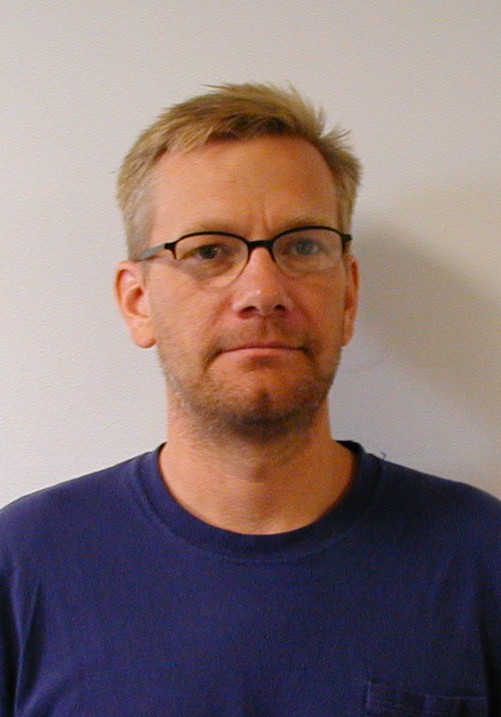 | John Bradford
received BS degrees in both Physics and Engineering Physics from the
University of Kansas in 1994, and a PhD in geophysics from Rice
University in 1999. From 1995 to 1999 he was a Research
Scientist at the Houston Advanced Research Center and worked on topics
ranging from spectral decomposition for seismic exploration to utility
detection with GPR. In 2001 he joined the Center for Geophysical
Investigation of the Shallow Subsurface at Boise State University where
he served as Director from 2006-2009. He currently holds the rank
of Professor in the Department of Geosciences at Boise State. He
has worked extensively on methodology development for near-surface
seismic and GPR applications with emphasis on imaging, attenuation, and
offset dependent reflectivity. He has published on a diverse
array of topics that include hydrocarbon detection, hydrogeophysics,
glaciology, and polar ecology. He served as Associate Editor for
Geophysics from 2005-2008, Associate Editor for Near Surface Geophysics
from 2009-2012 and co-edited the SEG book Advances in Near-Surface
Seismology and Ground-Penetrating Radar.
| 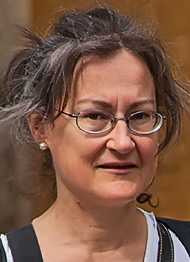 | Amelia Rubio Bretones
received the Ph.D. degree in physics (cum laude) from the University of
Granada, Spain in 1988. Since 1985 she has been employed in the
Department of Electromagnetism at the University of Granada, first as
an Assistant Professor, and then in 1989 as an Associate Professor, and
finally, since the year 2000 as a Full Professor. On several
occasions, she was a Visiting Scientist at the Delft and Eindhoven
Universities of Technologies (both in The Netherlands) and at the
Pennsylvania State University. She was the recipient of a Summa
Foundation fellowship in 1997 and also of the International Union of
Radio Science (URSI) Young Scientist Award in 1993 and 1995. Her
research expertise lies mainly in the field of numerical techniques for
applied electromagnetics with an emphasis on time domain techniques
such as finite difference time domain, the method of moments in the
time domain with application in antenna and scattering problems, and
GPR. She was co-chair of the 5th International Workshop on Advanced
Ground Penetrating Radar, IWAGPR2009, held in Granada (Spain).
|  | Charlie Bristow
is a Professor of Sedimentology at Birkbeck, University of London. He
has 20 years experience using GPR in field investigations of shallow
subsurface stratigraphy with over 75 publications in peer reviewed
journals.
| 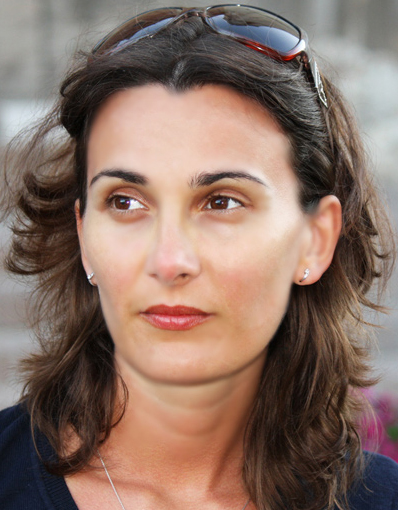 |
Ilaria Catapano
(Research Scientist at CNR, level III) received PhD degree in Electric
and Information Engineering from the University of Cassino, Italy, in
2006. In 2003, in the framework of her PhD project, she started her
research activity at the Institute for Electromagnetic Sensing of the
Environment, National Research Council of Italy (IREA-CNR), where she
is currently a full-time Researcher. She has been a Postdoctoral
Researcher at the Institute Fresnel of Marseille, France, from October
2006 to March 2007. She was adjunct Professor of Electromagnetic
Diagnostic at the Mediterranea University of Reggio Calabria, Italy, in
2010 and she was invited lecturer during the 15th Summer School in
Geophysics at São Paulo University, Brazil, in 2013. Her research
activities deal with non-invasive electromagnetic diagnostics and are
mainly focused on models and strategies for electromagnetic forward and
inverse scattering problems, development and performance assessment of
microwave imaging approaches for shape reconstruction and
electromagnetic characterization of targets hidden in complex
environments, as well as on the processing of experimental data
gathered by means of radar systems for sub-surface surveys. Ilaria
Catapano has co-authored more than 70 papers, mainly on scientific
journals or proceedings of international conferences and she is a
reviewer for several international journals and conference. Ilaria
Catapano received the G. Barzilai Award by the Italian Electromagnetic
Society (SIEM) in 2004, she was one of the Young Scientist Awardees at
the XXIX URSI General Assembly in 2008.
| 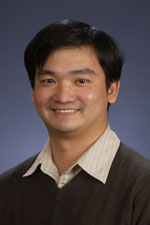 | Chi-Chih Chen
received his MS and Ph.D. degrees from the Ohio State University
Electrical and Computer Engineering Department in 1993 and 1997,
respectively. He has been with The Ohio State University ElectroScience
Laboratory since 1993 as a Postdoctoral Researcher (1997~1999), Senior
Research Associate (1999-2003) and Research Scientist in (2004~2011).
He became a Research Associate Professor at The Ohio State University
Electrical and Computer Engineering Department in 2011. Dr. Chen’s
research interest focuses on developing novel antenna and radar
technologies. On the antenna side, he has developed several novel
ground penetrating antennas, ultra wideband antennas, dielectric
antennas, electrically small antennas, GPS and GNSS antennas, wearable
antennas, phase array antennas, low-profile antennas, and UWB
permittivity probes. On the radar side, he has developed novel
detection and discrimination methods for detecting and discriminating
buried objects such as ordnances, landmines, pipes, and tunnels based
on fully polarimetric and UWB signatures; X-band vehicle obstacle
detection radars; 77 GHz pedestrian radar model and detection
methodology. In addition, his most recent research activities include
developing efficient RF energy harvest and passive RFID and RFID
sensors. Dr. Chen has published 53 peered reviewed journal papers, 5
book chapters, 1 co-authored book, and more than 80 technical
reports. He has also given short courses on small antennas, UWB
antennas, UWB array, and ground penetrating radars. Dr. Chen received
OSU College of Engineering Lumley Research Award in 2004 and 2010. He
is an Edmund S. Gillespie Fellow of Antenna Measurement Techniques
Association (AMTA). He is a senior member of IEEE; member of
Exploration Geophysicists Society and Institute of Navigation. He
served as Treasurer, Vice Chairman and Chairman of IEEE Joint AP/MTT
Columbus from 2001 to 2003. He was technical Chair of 11th
International Ground Penetrating Radar Conference in 2006. He has been
serving as a member of the International Advisory and Science Committee
of International Ground Penetrating Radar Conference since 2006. He
served on the Technical Program Committee of 2011 IEEE APS/URSI
Symposium. He is serving on the Technical Program Committee of
2013 IEEE Phase Array Symposium. Dr. Chen has been serving on the AMTA
Board of Directors as Technical Coordinator since 2012 and was recently
elected to be the President of 2014. He is also a member of Sigma Xi
aind Phi-Kappa-Phi.
| 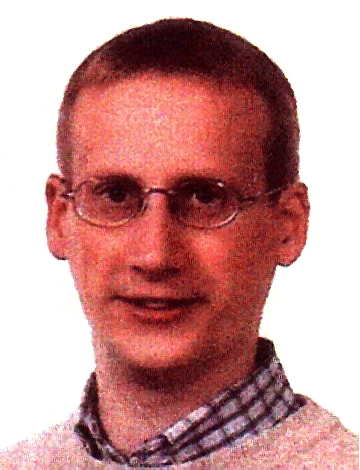 | Christophe Craeye
(M’98–SM’11) was born in Belgium in 1971. He received the Electrical
Engineer and Bachelier in Philosophy degrees and Ph.D. degree in
applied sciences from the Université catholique de Louvain (UCL),
Louvain-La-Neuve, Belgium, in 1994 and 1998, respectively. From 1994 to
1999, he was a Teaching Assistant with UCL and carried out research on
the radar signature of the sea surface perturbed by rain, in
collaboration with NASA and ESA. From 1999 to 2001, he was a Post-Doc
Researcher with the Eindhoven University of Technology, Eindhoven, The
Netherlands. His research there was related to wideband phased arrays
devoted to the Square Kilometer Array radio telescope. In this
framework, he also was with the University of Massachusetts,
Amherst,MA, USA, in the Fall of 1999, and worked with the Netherlands
Institute for Research in Astronomy, Dwingeloo, The Netherlands, in
2001. In 2002, he started an antenna research activity at the
Université catholique de Louvain, where he is now a Professor. He was
with the Astrophysics and Detectors Group, University of Cambridge,
Cambridge, U.K., from January to August 2011. His research interests
are finite antenna arrays, wideband antennas, small antennas,
metamaterials, and numerical methods for fields in periodic media, with
applications to communication and sensing systems. His research is
funded by Région Wallonne, European Commission, FNRS, and UCL. Prof.
Craeye served as an Associate Editor of the IEEE Transactions on
Antennas and Propagation from 2004 to 2010. He is now an Associate
Editor for the IEEE Antennas And Wireless Propagation Letters. In
2009, he received the 2005–2008 Georges Vanderlinden Prize from the
Belgian Royal Academy of Sciences. |  | Lorenzo Crocco
is a Research Scientist at the Institute for the Electromagnetic
Sensing of the Environment, National Research Council of Italy
(IREA-CNR), Naples, since 2001. In 2009–2011, he was an Adjunct
Professor at the Mediterranea University of Reggio Calabria (Italy),
where he currently is a member of the Board of Ph.D. advisors. His
scientific interests include noninvasive diagnostics,
ground-penetrating radar, imaging methods, through the wall radar,
inverse problems, electromagnetic scattering problems, electromagnetic
modelling, antennas and novel electromagnetic devices, microwave
biomedical imaging and therapeutic uses of electromagnetic fields. With
respect to these topics, he has published more than 60 papers on peer
reviewed international journals, given keynote talks at international
conferences and lead or actively contributed to many research projects.
Dr. Crocco has served as Guest Editor for several international
journals and is currently member of the Editorial Board of the
International Journal of Antennas and Propagation (IJAP). He has
co-chaired the IWAGPR2007 workshop (International Workshop on Advanced
Ground Penetrating Radar) and the XIII International Conference on
Ground Penetrating Radar (GPR2010). He is a Fellow of The
Electromagnetics Academy (TEA) and a Senior Member of the IEEE.
He was the recipient of the “Barzilai” Award for Young Scientists from
the Italian Electromagnetic Society (2004) and Young Scientist Awardee
at the XXVIII URSI General Assembly (2005). In 2009, he was awarded as
one of the top 100 under 40 scientists of CNR.
| 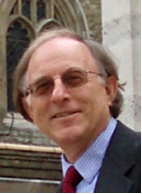 | David Daniels
is a Fellow of the IEEE and the IET and an internationally
recognised expert on ground penetrating radar. He has published a
number of award winning books as well as over 100 technical papers,
primarily on ground penetrating radar, but also on sensing techniques
for concealed objects. He has contributed to a number of seminal
reference books in the field, including a contribution to Skolnik’s
Radar Handbook 3rd Edition. He also recently authored “EM detection of
concealed targets”, which was published by Wiley in 2009 and describes
detection techniques ranging from NQR through to sub millimetre wave
radar. David was appointed a CBE is the 2012 Queen's Birthday Honours
List.
| | Xavier Dérobert
received either an Engineer's degrees and a M.Sc.(Eng.) degrees in
Civil engineering in 1987, received a PhD in electromagnetism in 1995
at Lille university and got his habilitation to supervise PhD theses in
2003 at Nantes university. He joined the Laboratoire Central des Ponts
et Chaussees (LCPC transformed in Ifsttar in 2011) in Nantes, France,
in 1987 as a research scientist. He has organized two national
workshops on Ground Penetrating Radar in 2001 and 2003, co-organized
the NDT-CE international congress in 2009 in Nantes and the IWAGPR
workshop in 2013 in Nantes. He is currently the head of the "Assessment
and imaging" laboratory, working in the development of methodologies
using radar techniques on civil infrastructures and subsurface
geophysics, and in the EM characterization of civil engineering
materials. He has published over 60 journal papers and international
communications on these subjects.
| 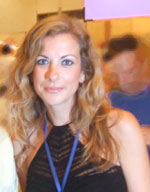 | Nectaria Diamanti
received both her B.Sc. in Geology and her M.Sc. in Geophysics, from
the Aristotle University of Thessaloniki, Greece. In 2008, she obtained
her Ph.D. in Engineering & Electronics from The University of
Edinburgh, U.K. From 2009 to 2013 she was a research scientist at the
Department of Geophysics, Aristotle University of Thessaloniki. In
September of 2013, she moved to Canada and has been working since then
with Sensors & Software Inc. in the area of Ground Penetrating
Radar (GPR) R&D and applications. Her main research activity
involves application of geophysical techniques and especially GPR to
geophysical/engineering problems ranging from environmental monitoring
to non-destructive testing and archaeological prospection. Her areas of
research include: numerical modelling using the finite-difference
time-domain (FDTD) technique, application of numerical modelling to GPR.
| 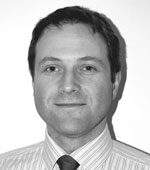 | Antonis Giannopoulos
is a Senior Lecturer in the School of Engineering, Institute for
Infrastructure and Environment, at The University of Edinburgh, UK. His
research interests include the numerical modelling of ground
penetrating radar, computational electromagnetics - especially
finite-difference time-domain based approaches - and the development
and application of geophysical techniques for non-destructive testing
and condition assessment of structures. He is the author of GprMax
(www.gprmax.org) a freely available FDTD GPR simulator. He is a member
of SEG and EAGE.
| 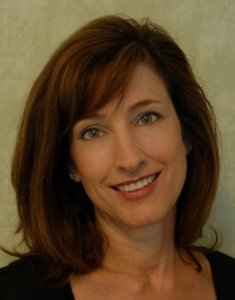 | Susan Hubbard
is the Director of the Earth Sciences Division at Lawrence Berkeley
National Laboratory (LBNL), which conducts basic and applied research
focused on hydrogeological, geochemical, geophysical, and biological
processes that are important for climate change, carbon cycling,
environmental stewardship, and energy resources sustainability. Susan
received her PhD from Berkeley in Civil and Environmental Engineering,
her MS in geophysics, and her BS in geology. She became a
scientist at LBNL in 1998, after working as a geologist at the USGS and
an exploration geophysicist in the petroleum industry. Dr. Hubbard’s
research focuses on advancing subsurface characterization and
monitoring, with a particular emphasis on development of methods that
integrate geophysical and other datasets for quantifying subsurface
processes relevant to contaminant remediation, carbon cycling, water
resources, and enhanced hydrocarbon recovery. She has published
approximately 100 papers on these topics and co-edited the first
textbook on Hydrogeophysics. Dr. Hubbard serves on several scientific
advisory boards, including the Department of Energy Biological and
Environmental Research Advisory Committee. She is the Associate
Director for the Berkeley Water Center, is a co-editor for the Vadose
Zone Journal, and is an Associate Editor for JGR-Biogeosciences. She
was the 2009 recipient of the Frank Frischknecht Award for leadership
and innovation in near-surface geophysics, was a Geological Society of
America (GSA) Birdsall Dreiss Distinguished Lecturer in 2010, and
became a GSA Fellow in 2011.
| 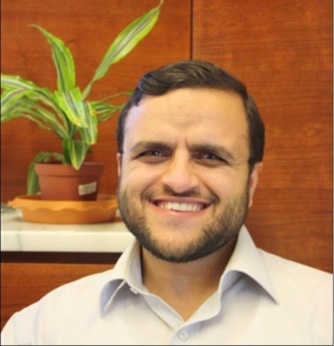 | Khan Zaib Jadoon
received his Ph.D. degree in Agricultural and Environmental Engineering
from the Université catholique de Louvain (UCL, Belgium), in 2010. He
received his Master's degree in Geophysics from Quaid-I-Azam
University, Pakistan. He was with the Agrosphere, Institute of Bio- and
Geosciences at Research Centre Jülich, Germany from 2007 to 2011, as a
research assistant and postdoctoral researcher. During his PhD
studies, he spent three months as a guest scientist at Earth Sciences
Division, Lawrence Berkeley National Laboratory (LBNL). Since January
2012, he is working as a postdoctoral researcher with the King Abdullah
University of Science and Technology (KAUST), Saudi Arabia. His current
research concentrates on hydrogeophysics, GPR-full waveform inversion
techniques, and integrated hydrogeophysical inversion of time-lapse GPR
data for the characterization of the vadose zone.
| 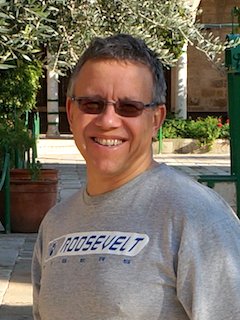 | Harry Jol
earned his B.Sc. and M.Sc. from Simon Fraser University (Canada) and
Ph.D. from the University of Calgary (Canada, 1996). He then was
awarded to 2 post-doctoral fellowships (Killam & NSERC) before
accepting a position at the University of Wisconsin-Eau Claire where he
is presently a Professor and a Fellow of the Geological Society of
America. During his Master's degree he worked on the Fraser River Delta
conducting a high resolution shallow seismic program in collaboration
with the Geological Survey of Canada. During in his Ph.D. research
through to the present he has utilized ground penetrating radar (GPR)
at more than 1000+ sites in North America, Europe, Israel, New Zealand,
Australia, and Antarctica. Harry has a broad background in the earth
sciences, particularly geomorphology, stratigraphy, and geoarchaeology.
His research has resulted in numerous publications, and conference
presentations including 3 co-edited GPR volumes (Ground Penetrating
Radar in Sediments, Stratigraphic Analysis using GPR, and Ground
Penetrating Radar: Theory and Applications). Harry looks forward to
further synergistic field based research and teaching opportunities
throughout the world.
| 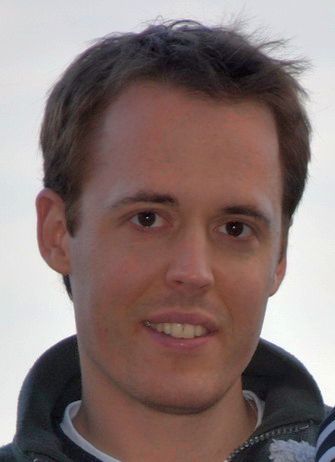 | François Jonard
received an M.Sc. and a Ph.D. degree in Bioengineering from the
Université catholique de Louvain (UCL, Belgium), in 2002 and 2012,
respectively. From 2003 to 2004, he worked at the Earth and Life
Institute (UCL) as a research assistant on forest hydrology modeling.
In 2005, he received a Master's degree in business administration at
the Louvain School of Management (UCL). From 2006 to 2009, he was a
Consultant with the European Commission in the fields of geographic
information systems and remote sensing applied to environmental issues.
In 2009, François Jonard obtained a three-year Ph.D. grant from the
Research Centre Jülich (Germany) funded by the German Research
Foundation. The topic of his Ph.D. thesis was “soil water content
estimation using ground-based active and passive microwave remote
sensing”. Since March 2012, he is working as a Postdoctoral Researcher
with the Agrosphere, Institute of Bio- and Geosciences, Research Centre
Jülich. His current field of research is hydrogeophysics and
soil/vegetation characterization from microwave remote sensing.
|  | Anja Klotzsche
received a Master's degree in Applied Geophysics in 2009 in a Joint
Master Program of the TU Delft (Netherlands), ETH Zurich(Switzerland)
and RWTH Aachen (Germany). In 2013 she obtained a PhD in
Hydrogeophysics from the RWTH Aachen (Germany) and was working as a
research assistant in the Agrosphere, Institute of Bio- and Geosciences
at Forschungszentrum Jülich, Germany from 2009 to 2013. Since February
2013, she is working at the same institute as a Postdoctoral
Researcher. In 2011 and 2012 she spent three months as a guest
scientist at the Boise State University (Idaho, USA). Her work was
twice awarded with the Young scientist Best Paper Award 2010 at the
XIII International Conference on Ground Penetrating Radar, and 2012 at
the 14th International Conference on Ground Penetrating Radar. Her main
research activity is focused on Hydrogeophysics and GPR Full-waveform
inversion for borehole and surface data.
| 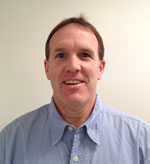 | Steven Koppenjan
has conducted research with subsurface radar since joining the Special
Technologies Laboratory, Santa Barbara, CA in 1986. Mr Koppenjan
received his MSEE and BSEE in Electrical and Computer Engineering from
UCSB. He has been the principal investigator in the design and
development of several ground penetrating radars and been involved with
extensive field tests that also includes other geophysical methods. Mr.
Koppenjan was the General Chair of the 9th International Conference on
Ground Penetrating Radar (GPR 2002) and is a member of the
International GPR Advisory Board. He is a co-author on the book
Ground Penetrating Radar: Theory and Applications (Elsevier
2009).
| 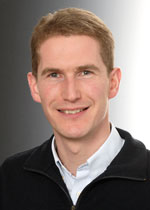 | Sébastien Lambot
received the M.Sc. (magna cum laude) and Ph.D. (summa cum laude)
degrees in Agricultural and Environmental Engineering from the
Université catholique de Louvain (UCL), Louvain-la-Neuve, Belgium, in
1999 and 2003, respectively. He was with the Delft University of
Technology, Delft, The Netherlands, from 2004 to 2005, as a European
Marie-Curie Post-doctoral Scientist. From 2006 to 2012, he was with
Forschungszentrum Jülich, Jülich, Germany, as a Research Group Leader.
Since 2006, he has been a Professor and FNRS research group leader at
UCL. His research interests include electromagnetic modeling for
ground-penetrating radar and electromagnetic induction, inversion for
non-destructive characterization of soils and materials,
hydrogeophysics and remote sensing of the environment. Dr. Lambot was
the General Chair of the 3rd International Workshop on Advanced Ground
Penetrating Radar in 2005 and is organizing the 15th International
Conference on Ground Penetrating Radar in 2014. He is an Associate
Editor for the Vadose Zone Journal.
|  | Lanbo Liu
received BS and MS in Geophysics from Peking University, and MS in
Civil and Environmental Engineering, PhD in Geophysics from Stanford
University. He was the Carnegie Fellow at Carnegie Institution of
Washington before joining the faculty of Geology and Geophysics of the
University of Connecticut. He was the Summer Faculty Fellow at
Schlumberger-Doll Research, and at NASA’s Goddard Space Flight Center.
He is also serving as an Expert for US Army Corps of Engineers. He
received the US Army R&D Achievement Award for his work on radio
wave propagation in complex terrains. He was a Fulbright Scholar to
Norway in 2009-2010. He is currently a Professor at the University of
Connecticut. He has more than 100 publications in peer-referred
journals, conference proceedings, and technical reports. He served for
Geophysics and is serving for Journal of Environmental and Engineering
Geophysics as the Associate Editor. His current research concentrates
on numerical modeling and imaging with electromagnetic, acoustic, and
seismic waves for exploration, military, geotechnical, environmental,
and biomedical engineering applications.
| 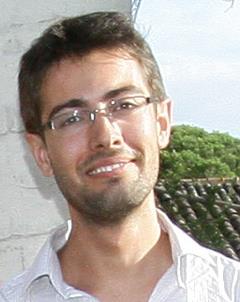 | François Lavoué
received the B.Sc. in Geosciences from the Ecole Normale Supérieure de
Lyon (France) in 2008 and the M.Sc. degree in Geophysics from the
Institut de Physique du Globe de Paris (Université Paris 7, France) in
2010. He is now a Ph.D. student at the University of Grenoble (France).
His research activity takes place at the Institute for Earth Sciences
(ISTerre) and concerns multi-parameter full waveform inversion of
ground-penetrating radar (GPR) data. This work was awarded by the Best
Student Paper Award at the 7th International Workshop on Advanced GPR
(IWAGPR 2013).
| 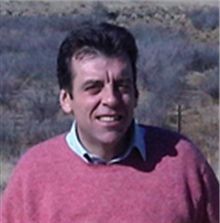 | Guido Manacorda
graduated in Electronics Engineering in 1992 from Pisa University.
After a few months spent at the Engineering Faculty studying a spectral
evaluation method for ultrasound biomedical systems, he joined IDS in
January 1993. He contributed to the development of the first innovative
array-based GPR’s as part of a project joint project between IDS and
Telecom Italia: these prototypes were the basis for the growth of the
IDS GPR product line which now features multi-channel and
multi-frequency arrays. He has a very wide experience in GPR
applications for Non Destructive Testing for the presence of subsoil
utilities, buildings, archaeology etc. He is author of many papers in
scientific journals and conference publications on GPR design and
applications and has been the Chief Engineer of the IDS Georadar
division since 1999. He played a key role as IDS project leader in the
GIGA EU project within Framework 5 and IDS Project Manager in the
Orfeus collaborative researches (6th and 7th Framework) as well as in
the Nettun project (7th Framework).
| 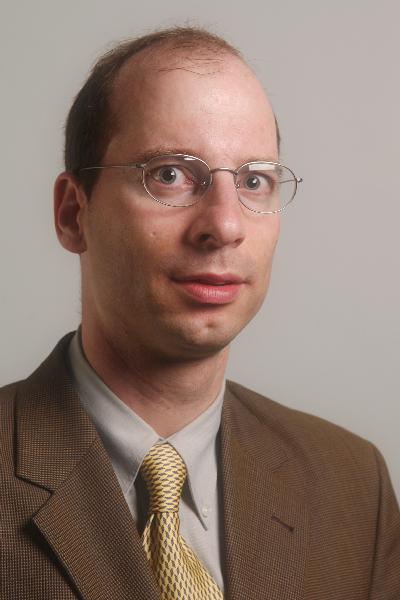 | Xavier Neyt
received a master in engineering (summa cum laude) from the Université
Libre de Bruxelles (ULB) in 1994, a postgraduate degree in Signal
Processing (summa cum laude) from the Université de Liège (ULg) in 2004
and a PhD in Applied Science from the Royal Military Academy (RMA) and
the Université de Liège in 2008. In 1995 he received the Frerichs Award
from the ULB and the special IBM grant from the Belgian National Fund
for Scientific Research (NFWO). He also serves on the Radar Systems
Panel of the IEEE Aerospace and Electronic Systems Society. Since then
he has been working as research engineer for the Royal Military
Academy, Belgium. In 1996-1997 he was visiting scientist at the French
aerospace center (ONERA) and in 1999 at the German aerospace centre
(DLR). In 1997-1999 he was responsible for the design of the image
compression module of the European MSG satellite and in 2000-2007,
responsible for the redesign of the ground processing of the
scatterometer of the European ERS satellite following its gyroscope
anomaly. Since 2008, he is leading the Scatterometer Engineering
Support Laboratory for the European Space Agency at the Royal Military
Academy. He is now associate professor at the Communication,
Information, Systems and Sensors department of the Royal Military
Academy. His research interests are signal processing, radar remote
sensing, array processing, bistatic radars and SAR image processing.
|  | Frédéric
Nguyen obtained his PhD degree at the Université de Liège in 2005
dedicated to the development and application of geophysical methods to
detect and image active faults in slowly deforming regions. During his
PhD research, his main interests were to develop methodologies based on
image and signal processing to objectively interpret electrical
resistivity data and seismic data (active and passive) for shallow
surveys. From a seismic hazard point of view, his research allowed
unveiling surface ruptures associated with the strongest earthquake
recorded in France (Provence) in the twentieth century. He then worked
from 2005 to 2008 as a post-doctoral researcher at the
Forschungszentrum Jülich within the framework of the European project
ALERT on the sustainable management of water resources by automated
real-time monitoring in coastal aquifers. His research interest then
shifted towards environmental geophysics and inverse problems. He
contributed to the development of the code CRTOMO for the inversion of
complex electrical resistivity data together with Professor Andreas
Kemna. Of particular research interest were the development of image
appraisal quantities and time-lapse inversion schemes. Since 2007, he
is a Professor in Applied Geophysics at the University of Liège where
he leads a research team, and was appointed in 2010 as a part-time
Professor at KULeuven. To date, F. Nguyen succesfully supervised three
PhDs and two post-doctoral researcher. Currently, he supervises five
PhD students. The research focus of his group lies on one hand in
solving geophysical inverse problems and associated topics (e.g.
uncertainty analysis) and on another hand in the integration of
geophysical data in highly multidisciplinary fields of research
(geothermy, bioremediation, concrete in civil engineering).
| 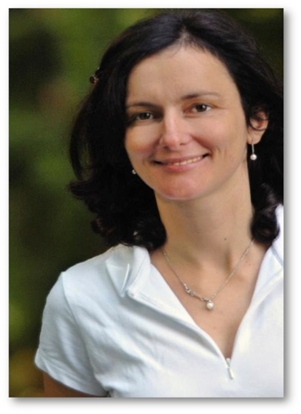 | Lara Pajewski
received the Laurea degree in Electronic Engineering cum laude from
“Roma Tre” University of Rome, Italy, and the Ph.D. in Applied
Electromagnetics and Electrophysics Sciences from "La Sapienza"
University of Rome, in 2000 and 2004, respectively. From 2004 to 2008
she worked at “Roma Tre” University as a Technician and since 2008 she
is a Researcher in Electromagnetics. She is the Chair of COST Action
TU1208 “Civil Engineering Applications of Ground Penetrating Radar”,
launched in April 2013 and involving more than a hundred experts from
20 European Countries (www.GPRadar.eu). Her main research interests are
in Ground Penetrating Radar and its applications, solution of
electromagnetic forward- and inverse-scattering problems, antennas
design and characterization, synthesis of photonic and electromagnetic
band-gap metamaterials, electromagnetic pollution and radiation
protection. She is the author/co-author of more than 150 scientific
works on international books, journals and conference proceedings. She
is Western-Europe Editor for the Taylor&Francis Journal
“Nondestructive Testing and Evaluation”, since 2011 convenes the
Session “Civil Engineering Applications of Ground Penetrating Radar” at
the annual European Geosciences Union General Assembly (EGU-GA), and
since 2013 is a member of the Scientific Committee of the biennial
International Workshop on Advanced Ground Penetrating Radar (IWAGPR).
At “Roma Tre” University, she holds the "Laboratory of Microwaves and
Antennas" course for the Laurea in Electronic Engineering (Bachelor's
Degree) and the “Electromagnetic Instrumentation" course for the Laurea
Magistralis in “Communication and Information Technology Engineering”,
in “Electronic Engineering” and in “Bioengineering” (Master’s Degrees).
Dr. Pajewski is a member of the Institute of Electrical and Electronics
Engineers (IEEE), IEEE Antennas and Propagation - Microwave Theory and
Techniques - Geoscience and Remote Sensing – Women in Engineering
Societies, European Geosciences Union, Italian Interuniversity
Consortium for Telecommunications (CNIT), and Italian Society of
Electromagnetics (SIEM).
| 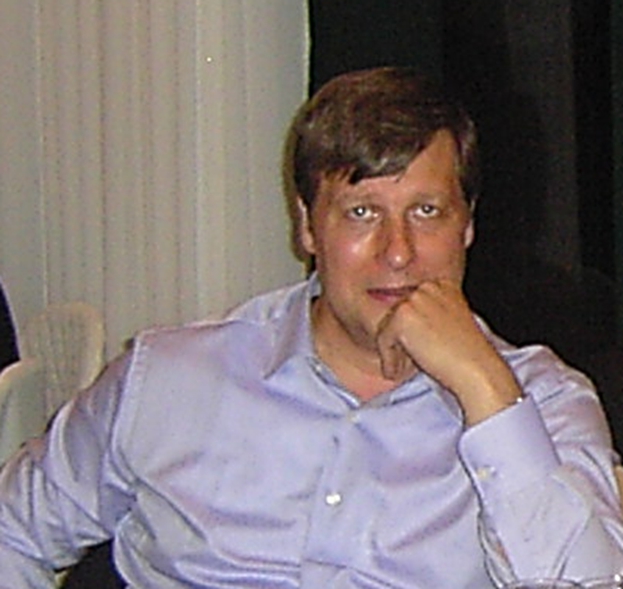 | Raffaele Persico
achieved his degree summa cum laude in Electronic Engineering from the
University of Naples Federico II in 1996 and his Ph.D. from the Second
University of Naples in 1999. He has been Research Scientist at the
Consortium for Advanced Research on Remote Sensing Systems CO.RI.S.T.A.
and then at the Institute for Electromagnetic Sensing of the
Environment IREA-CNR. In 2007, he joined the Institute for
Archaeological and Monumental Heritage IBAM-CNR. His main interests are
noninvasive prospecting applied to cultural heritage, inversion
approaches applied to GPR data and reconfigurable stepped frequency
systems. He is Associated Editor of Near Surface Geophysics and member
of the European GPR Association. He chaired the 13th International GPR
Conference in 2010
| 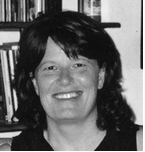 | Elena Pettinelli
received a degree (cum laude) in Geophysics at the University of Rome
“La Sapienza” in 1990, and a Ph.D. in Applied Geophysics at the
University of Trieste in 1993. In 1993 and 1994 she was a visiting
scientist at the University of Waterloo, Canada where she worked on
antenna radiation pattern measurements and GPR response from buried
targets. Her specific research interests in GPR includes antenna
calibration, target identification, geological, environmental and
archaeological applications. Since 2000 she has been actively involved
in Mars subsurface exploration being part of the Science Team of the
A.C.QU.A. (Ares soil Characterization by Quadrupole Analysis) Project,
supported by the Italian Space Agency (ASI). She is Co Investigator of
the SHARAD experiment and cooperate with the MARSIS Science Team for
the electromagnetics laboratory instigations on Martian soil simulants
and for radar data inversion. She is Co Investigator and responsible of
the Italian team for the WISDOM radar onboard of the ESA mission
EXOMARS. She is also Co Investigator of RIME, the orbiting radar
sounder for icy satellites exploration which is part of the payload of
the next mission JUICE to the Jupiter Galilean satellites. Presently
she is assistant professor at the Mathematics and Physics Department of
Roma Tre University where she is responsible of the laboratory of
“Applied Physics to Earth and Planets”.
| 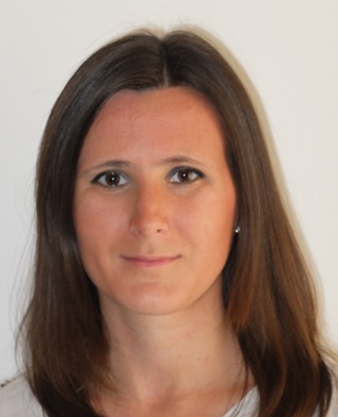 | Cristina Ponti
received the First Level Laurea (cum laude) and the Laurea Magistralis
(cum laude) in Electronic Engineering, from “Sapienza” University of
Rome, in February 2004 and February 2006, respectively. In 2010 she
received the PhD degree from the Doctoral School in Engineering of
“Roma Tre” University. In the same year she joined the Applied
Electronics Department, now Engineering Department, of “Roma Tre”
University as an Assistant Researcher. Since 2010 to 2012 she was an
Assistant Professor in Electromagnetic Fields, and since 2013 she is an
Assistant Researcher. Her research interests include electromagnetic
theory, numerical methods, scattering by buried objects, Ground
Penetrating Radar, antennas for microwave and millimeter applications,
electromagnetic analysis and synthesis of periodic structures, and
nuclear fusion. In 2012 she received the Best Paper Award at
International Symposium on Antenna and Propagation, in Nagoya, Japan.
She participates in the COST Action TU1208 “Civil Engineering
Applications of Ground Penetrating Radar,” and she is leader of the
Action’s Project “Development of new methods for forward
electromagnetic scattering by buried objects”. Cristina Ponti is a
member of Institute of Electrical and Electronics Engineers (IEEE),
IEEE Antennas and Propagation (AP) Society and Women in Egineering
(WiE) Society, a member of the Italian Society of Electromagnetics
(SIEm), and of National Interuniversity Consortium for
Telecommunications (CNIT).
|  | Fayçal Rejiba
received a Ph.D (2002) from the University Pierre et Marie Curie
(Paris VI) and is associate professor of geophysics at the same
university. His main research interest is environmental geophysics:
modeling, design, prospection and interpretation.
| 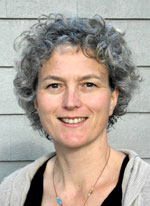 | Albane Saintenoy
received a Ph.D in geophysics in 1998 from the University Paris
Diderot. From 1998 to 2000, she was a post-doctoral fellow at the
Center for Wave Phenomena, Colorado School of Mines, Golden (CO)
working on the waveform inversion of borehole vertical profiling radar
data. Since September 2000, she joined the Earth Science department of
University Paris Sud, France, where she is an Associate Professor. In
2008, she spent a sabbatical year in Jan Hopmans'lab at the University
of California in Davis. Her current research interests are GPR survey
applications to arctic glacier investigation, archaeological targets,
civil engineering testing experiments, and soil hydraulic parameter
determination from on-ground GPR measurements.
| 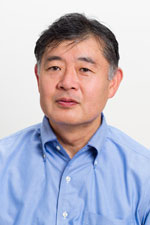 | Motoyuki Sato
received the B.E., M.E degrees, and Dr. Eng. degree in information
engineering from the Tohoku University, Sendai, Japan, in 1980, 1982
and 1985, respectively. Since 1997 he is a professor at Tohoku
University and a distinguished professor of Tohoku University since
2007, and he was the Director of Center for Northeast Asian Studies,
Tohoku University during 2009-2013. From 1988 to 1989, he was a
visiting researcher at the Federal German Institute for Geoscience and
Natural Resources (BGR) in Hannover, Germany. His current interests
include transient electromagnetics and antennas, radar polarimetry,
ground penetrating radar (GPR), borehole radar, electromagnetic
induction sensing, interferometric and polarimetric SAR. He has
conducted the development of GPR sensors for humanitarian demining, and
his sensor ALIS which is a hand-held dual sensor, has detected more
than 80 mines in mine fields in Cambodia since May 2009. He is a
visiting Professor at Jilin University, China, Delft University of
Technology, The Netherlands, and Mongolian University of Science and
Technology. He was the technical chair of GPR96 and the general
chairperson of IGARSS2011.
| 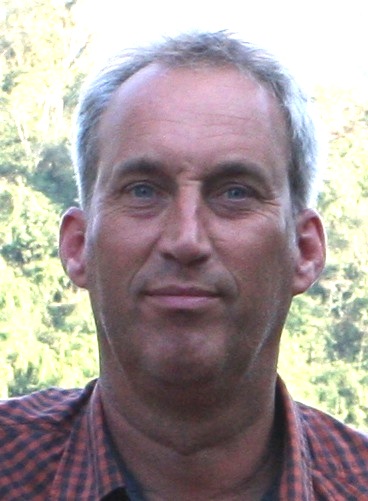 | Evert Slob
received the M.Sc. degree in mining and petroleum engineering, and the
doctorate degree (cum laude) in applied sciences from Delft University
of Technology (TU Delft), Delft, The Netherlands, in 1989 and 1994,
respectively. In 1995, he joined the Department of Applied Earth
Sciences, TU Delft; currently he is professor of geophysical
electromagnetic methods in the Department of Geoscience &
Engineering. He is director of studies Applied Earth Sciences. He is
editor in chief for Geophysics (SEG) and associate editor for Near
Surface Geophysics (EAGE). His current research interests are EM
interferometry, hydrogeophysics, advanced imaging and inversion
techniques, heterogeneity determination, and soil characterization
including the study of fundamental relations between geological and EM
and electrokinetic properties. He published over a 100 international
peer reviewed journal papers on these subjects. Dr. Slob was the
General Chair of the 10th International Conference on GPR in 2004. He
organized ten international workshops and conference sessions and he
was guest editor for 11 special journal issues on GPR and
hydrogeophysics.
| 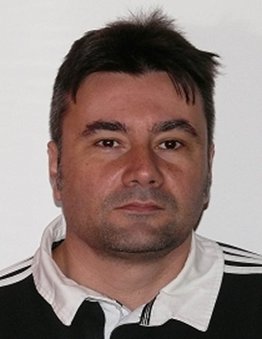 | Francesco Soldovieri
is Senior Research Scientist at IREA-CNR from 2006. He has been member
of Scientific Committees and Technical Review panels for the
International Conferences on Ground Penetrating Radar from 2004, for
International Workshop on Advanced Ground Penetrating Radar from 2003.
He was General Chair of the International Workshop on Advanced Ground
Penetrating Radar 2007 that has been held in Naples, Italy and General
Co-Chair at the International Conferences on Ground Penetrating Radar
2010. He is member of the Editorial Board of IEEE Geoscience and Remote
Sensing Letters and of Journal of Geophysics and Engineering. He
has been Technical/Scientific coordinator of the project FP7 ICT-SEC
“Integrated System for Transport Infrastructures surveillance and
Monitoring by Electromagnetic Sensing”. He is now Coordinator of the
Project FP7 IRSES Marie Curie Action “Active and Passive Microwaves for
Security and Subsurface imaging (AMISS)”. His actual main scientific
interests include electromagnetic diagnostics, inverse scattering, GPR
applications, antenna diagnostics and characterization; sea state
monitoring through X-band radar images He is co-author of
more than 160 papers on national and international Journals and about
200 conference proceedings at International Conferences.
|  | Mercedes Solla
received the Ph.D. degree (cum laude with extraordinary doctorate
award) in geodesy and geophysics from the University of Vigo, Spain, in
2010. Her present position is assistant professor at the Defense Centre
University (Spanish Naval Academy). Since 2007, she is researcher in
the Applied Geotechnologies Research Group of the University of Vigo,
which has been recognized as a reference group and competitive research
group by the Autonomic Government. Since 2012, she colaborates with the
Spanish National Research Council (CSIC). Her current research is
focused mainly on GPR and other NDT techniques applied to civil
engineering, and FDTD modelling. Since 2012, she is collaborating with
the Spanish National Research Council (CSIC). Dr. Solla is an active
member of the COST Action TU1208 “Civil Engineering Applications of
Ground Penetrating Radar”. She is a Management Committee Substitute
Member representing Spain, and the Vice-Chair of Working Group 4
(“Different Applications of Ground Penetrating Radar and other
Non-Destructive Testing Technologies in Civil Engineering”).
| 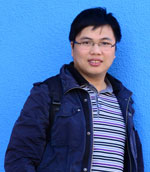 | Anh Phuong Tran
obtained his Master in GIS & Water Resources from Sejong University
(South Korea) in 2008 and Bachelor in Hydrology from Vietnam National
University, Hanoi (Vietnam) in 2005. In 2014, he received his Ph.D. in
Agricultural and Environmental Engineering from the Université
catholique de Louvain (UCL, Belgium). Since February 2014, he is a
Postdoc Researcher at the Environmental science (Earth and Life Science
Institute, UCL). From June 2014, he will join Lawrence Berkeley
National Laboratory to work as a postdoc scientist at the Earth
Sciences Division. His research interests are radar antenna modeling,
full-wave electromagnetic inversion, hydrogeophysics and assimilation
of geophysical data for characterization of hydrological and
biochemical processes in the subsurface.
| 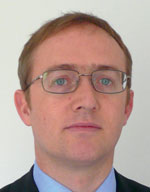 | Jan van der Kruk
received a Master's degree in Electrical Engineering in 1995 and a PhD
in Geophysics in 2001 from Delft University of Technology. From 2001 to
2008, he was a lecturer and senior researcher with the Applied and
Environmental Geophysics Group at ETH Zurich, Switzerland. His research
career has focused on the development of imaging and inversion
methodologies and their application to solving applied problems. Since
2008, he has held a professorship position with RWTH Aachen University,
Germany, and is a research group leader with the Research Center
Jülich, Germany. He received in 2000 the Best Paper Award from the
Department of Applied Earth Sciences, Delft University of Technology,
and Honorable Mention for Best Paper in Geophysics in 2006. In 2011, he
was general chair of the International Workshop on Advanced GPR
(IWAGPR2011) in Aachen, Germany. In 2012, he presented a SEG online
Virtual Class about ”Full-waveform Inversion of Ground Penetrating
Radar Data” and he was co-organiser of the SEG-AGU Hydrogeophysics
Workshop in Boise, U.S.A. Recent work has focused on the inversion of
dispersive GPR waves propagating in surface waveguides, GPR
full-waveform inversion techniques, and quantitative
multi-configuration inversion of electromagnetic induction data.
| 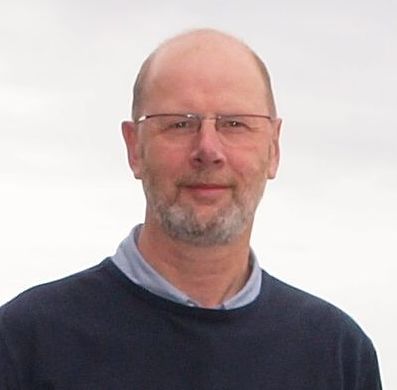 | Marc Van Meirvenne
graduated as Agricultural Engineer specialized in soil sciences at the
Ghent University, Belgium, in 1982. In 1991 he received his PhD on the
application of Geostatistics to characterise soil variability. Since
1993 he is professor at the Department of Soil Management of the Ghent
University with current teaching duties on Earth Sciences,
Geostatistics and Soil Inventory Techniques. Between 1998 and 2002 he
was chairman of the "Working Group on Pedometrics" and since October
2013 he is chairman of the "Working Group on Proximal Soil Sensing"
(both working groups belong to the International Union of Soil
Sciences). His research Group "ORBit" specializes in non-invasive
techniques for soil inventory and applies multi-receiver
electromagnetic induction (EMI) sensors to measure simultaneously the
electric and magnetic properties of soil. Current research lines
integrate EMI with GPR (both time and frequency domain systems). These
techniques are implemented to address a wide range of applications such
as soil mapping, precision agriculture, archaeological prospection,
cleaning of historic battlefields, geological exploration and
environmental pollution.
| 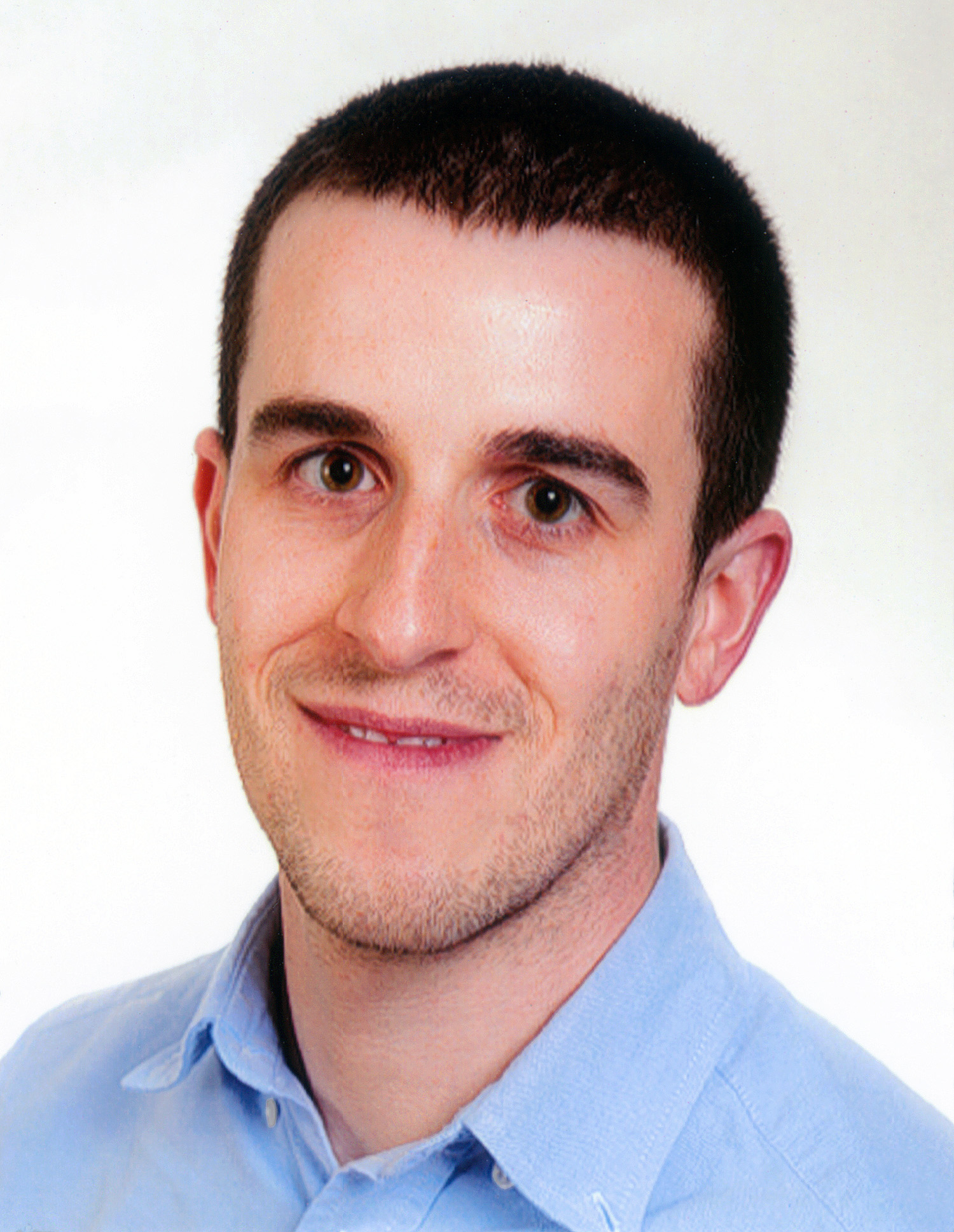 | Craig Warren
received the degrees of B.Eng. in Electrical and Mechanical
Engineering, and Ph.D. in Engineering from The University of Edinburgh,
U.K. in 2003 and 2009, respectively. From 2010 to 2013 he held the
positions of Teaching Fellow and Learning Technologist at The
University of Edinburgh, U.K. He is currently a lecturer in Mechanical
Engineering at Edinburgh Napier University, U.K. His main research
interests are the development of numerical models of Ground-Penetrating
Radar, and novel applications of GPR to engineering problems. He is
also active in the field of engineering education and technology
enhanced learning. He is a Chartered Engineer (C.Eng.) in the U.K. and
a member of both the Institution of Mechanical Engineers (IMechE),
U.K., and the Institution of Engineering Technology (IET), U.K.
| 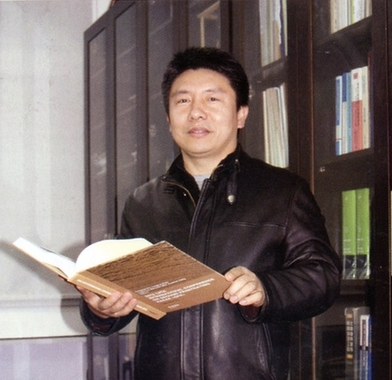 | Xiong-Yao Xie
is a professor and vice head in the Department of Geotechnical
Engineering of Tongji University, China. And he is also the Secretary
General of the committee of young scientist of Chinese Rock Mechanics
and Engineering Society. He got his BS degree from Jinlin University on
1995, got his MS and PhD degree from Tongji University on 1998 and
2002. He did post-doctor research in Polytechnic Lille of France on
2004. And he has been a visiting scholar in Northwestern University,
USA from 2008 to 2009. He was the general chairman of GPR 2012 and a
guest editor of Journal of Geophysics and Engineering on Oct, 2013. Now
his research interest is about non-destructive test in the field of
geotechnical engineering and tunnel.
|  | Richard Yelf
is an international consultant with more than 35 years experience in
Applied Geotechnics and Geophysics. He received his BSc Hons from
Liverpool University in 1976 and his MSc from the University College
London in 1979. He has worked full time in Ground Penetrating Radar for
the past 25+ years. He introduced GPR to Australia in 1984 and
commenced PhD studies on Applied GPR at the University of New England
in 1985. He was subsequently awarded a National Research Fellowship for
his work on the Applications of GPR to Mining and Geotechnical
Engineering. He has conducted a very wide range of GPR projects,
including Mining, Civil Engineering, Geotechnical Engineering,
Environmental, Borehole Radar, Archaeological, Forensic and Military
applications. He has numerous publications in the GPR forum and is the
editor of the Standards Manual for GPR Testing published by ASEG-SEGJ.
In 2004 he received the Inaugural Brite Award for Innovation in the
Australian Construction Industry for the development and practical
application of high resolution GPR inspection methods for examining
concrete structures in civil engineering. He has been heavily involved
with the organisation of the International Conferences on GPR since the
mid 1980’s and in 2006 and 2008 was the Co-Chair of the technical
sessions at this conference. In December 2009 he received an OCE Award
from the Australian Government (nominated by CSIRO) for the development
of a novel ground radar antenna for very deep penetration. This award
funds a 3 year research project which is being conducted in conjunction
with CSIRO at the QLD Centre for Advanced Technologies. He is the
founder and Managing Director of Georadar Research Pty Ltd, an
innovative Australian company which specialises in the introduction and
application of new GPR methods.
|
|
